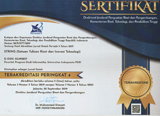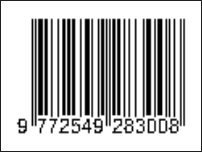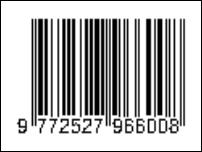Analisis Kualitas Produk Imprabox Menggunakan Metode Seven Tools
(1) Universitas Singaperbangsa Karaang
(2) Universitas Singaperbangsa Karawang
(3)
(*) Corresponding Author
Abstract
Product quality control is very important to pay attention to so that a company can continuously compete with other companies, increase its sales value, and get the trust of customers as its most important target. PT JP is an industrial company engaged in manufacturing with packaging products made from polypropylene/Impraboard, Cardboard Box, Polyethylene Foam, Spon Eva, and other packaging need materials. One of the products with a high sales rate is imprabox products. But, during the inspection process, there is a fairly high and diverse defect rate. Therefore, efforts are needed to minimize product defects using the basic seven tool method. This research begins with product inspection using a cheksheet in the QC (Quality Control) department. The inspection is carried out 23 times with a total of 3,256 items and 941 NG products. Furthermore, a flowchart is made to display the manufacturing process starting from marking, cutting, bending or fit up, welding, to finishing. Histogram is used to determine the variation of defects, in this case there are 12 types of defects including printing, EVA coating and NG cover. Pareto diagram is used to determine the dominant defects including in printing at 41.34%, Eva coating at 22.85% and NG cover at 11.265. Ishikawa/fishbone diagram is used to determine the causes of defects including human factors, machine factors, method factors and environmental factors. Scatter diagram is used to express the 77% relationship (correlation) between the variation in the number of defective products and the amount of production. The control diagram is used to analyze the control limits with UCL 40.9 and LCL 0.403.
Keywords
Full Text:
PDFReferences
E. S. Ratnadi, "Pengendalian Kualitas Produksi Menggunakan Alat Bantu Statistik (Seven Tools) Dalam Upaya Menekan Tingkat Kerusakan Produk," INDEPT, Vol 6 no 2, pp. 10-18, 2016.
F. Sutartiah, "Analisis Pengendalian Kualitas Produk Kain Jadi Polyester Dengan Menggunakan Metode Seven Tools Pada Divisi Inspecting PT. XYZ Karawang," STT. Wastukancana Purwakarta, 2016.
R. Akbar., A. W. Rizki, Hidayat, "Analisis Kecacatan Produk Meja Plywood Menggunakan Metode Seven ools (Studi Kasus: Teaching Factory SMK Manbaul Ulum)," SITEKIN: Jurnal Sains, Teknologi dan Industri, Vol. 19, No. 2, pp. 195-202, 2022.
Mardalia, D. W. Artiningsih, dan T. Wicaksono, "Analisis Pengendalian Kualitas Dalam Meningkatkan Kualitas Produk," Universitas Islam Kalimantan Muhammad Arsyad Al-Banjari Banjarmasin, 2018.
Somadi, B. S. Priambodo, dan P. R. Okarini , "Evaluasi Kerusakan Barang Dalam Proses Pengiriman Dengan Menggunakan Metode Seven Tools," Jurnal INTECH Teknik Industri Universitas Serang Raya Vol 6No 1 , pp. 1-11, 2020.
E. Haryanto &. I. Novialis, "Analisis Pengendalian Kualitas Produk Bos Rotor Pada Proses Mesin CNC Lathe Dengan Metode Seven Tools," Jurnal Teknik: Universitas Muhammadiyah Tangerang,Vol 8 no 1, pp. 69-77, 2019.
J. Radianza dan I. Mashabai, "Analisa Pengendalian Kualitas Produksi Dengan Menggunakan Metodeseven Tools Quality di PT. Borsya Cipta Communica," Jurnal Industri & Teknologi Samawa, Vol 1 no 1 pp. 17-21, 2020.
M. N. F. Fitriadi, "Perencanaan Pengendalian Kecacatan Kernel Dengan Metode Statistical Quality Control (SQC) Di PT. Fajar Baizury and Brother," Jurnal Optimalisasi Volume 4 Nomor 1, pp. 38-46, 2018.
Endi Haryanto dan Ipin Novialis, "Analisis Pengendalian Kualitas Produk Bos Rotor Pada Proses Mesin Cnc Lathe Dengan Metode Seven Tools," Jurnal Teknik: Universitas Muhammadiyah Tangerang, pp. 69-77, 2019.
I. Idris, R. A. Sari, Wulandari, dan Uthumporn, "Pengendalian Kualitas Tempe Dengan Metode Seven Tools," Jurnal Teknovasi, Volume 03, Nomor 1, pp. 66-80, 2016.
DOI: http://dx.doi.org/10.30998/string.v8i2.16999
Refbacks
- There are currently no refbacks.
Copyright (c) 2023 rahmah faurika

This work is licensed under a Creative Commons Attribution 4.0 International License.
STRING (Satuan Tulisan Riset dan Inovasi Teknologi) indexed by:

Ciptaan disebarluaskan di bawah Lisensi Creative Commons Atribusi 4.0 Internasional.
View My Stats

 Sertifikat Akreditasi
Sertifikat Akreditasi
















